
Science and technology are the most powerful resources in humanity's battle against COVID-19. Since the outbreak, research groups at Tsinghua Shenzhen International School (Tsinghua SIGS) have been leveraging their expertise in various fields to meet pressing demands in areas such as COVID-19 diagnosis, treatment and technological support.
1. Intelligent manufacturing speeds production of anti-epidemic supplies
The Intelligent Manufacturing and Precision Processing Laboratory at Tsinghua SIGS has been providing manufacturers of epidemic prevention materials with ultrasonic welding technology solutions and services. These capabilities aid in optimizing mask production and ultrasonic welding system design.
The team has recently developed core components for ultrasonic welding systems, and the first set of prototypes are being tested at off-campus partner enterprises.
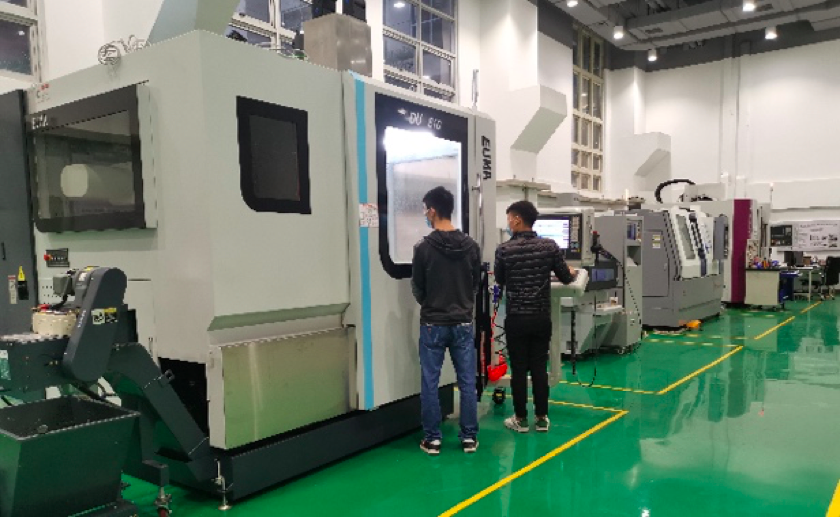
Manufacturing of core components for ultrasonic welding
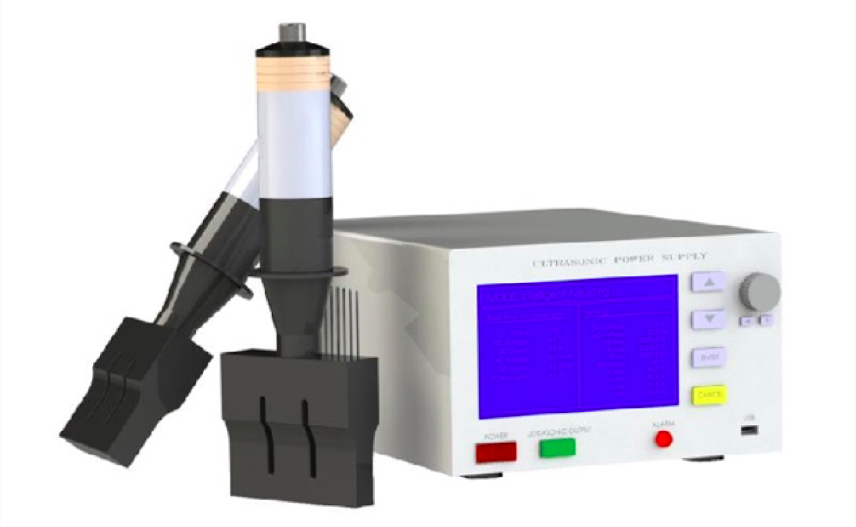
Core components and power supply for ultrasonic welding
2. Developing nanofiber filter membranes for reusable masks
Li Bo’s research team from Tsinghua SIGS and Associate Professor Wu Hui’s team from the School of Materials Science and Engineering have found that nanofiber membranes exhibit good filtering qualities and quickly started to develop filter material for masks after the outbreak.
Through experiments, the team found that non-static physical filtration can be achieved with the ultra-fine diameter and high density of air-spun nanofibers. The technology is currently undergoing third-party testing for real world applications as soon as possible.
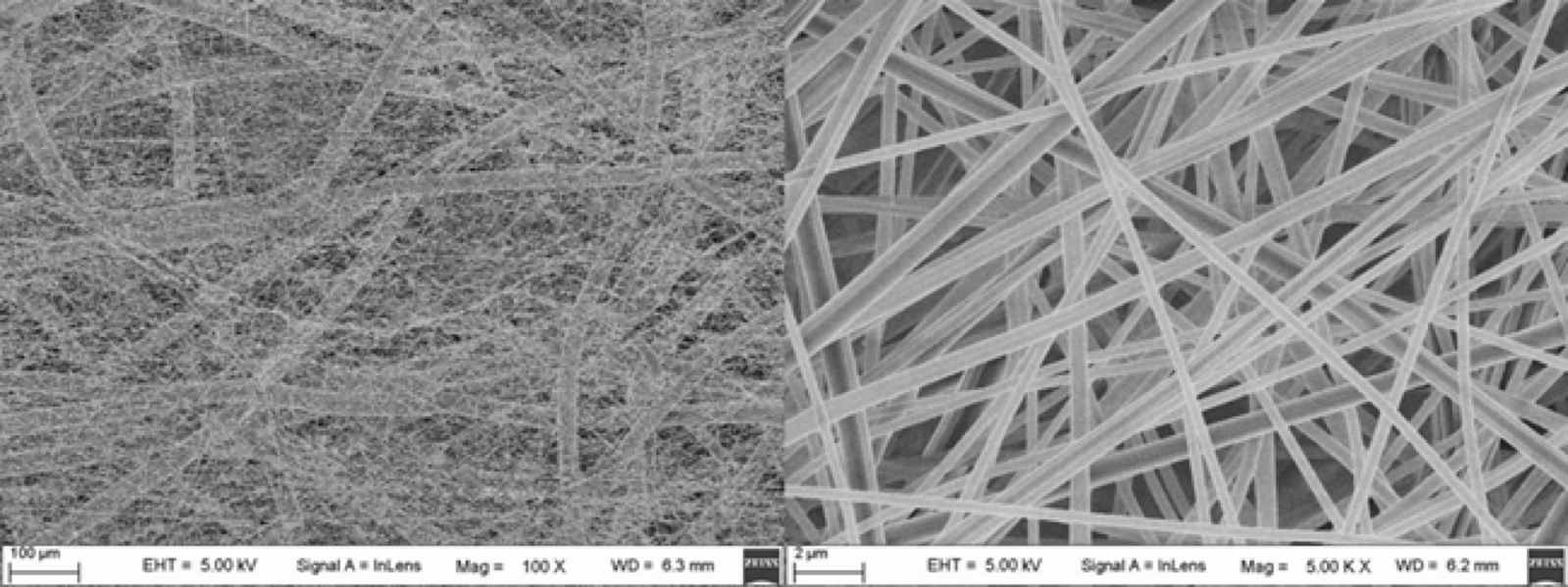
3. Real-time epidemic management system helps prevent and control urban outbreaks
Building upon expertise in the field of urban safety, Associate Prof. Wang Fei from the Tsinghua University Institute of Safety Science and Technology led a professional team to Foshan City to help develop a real-time epidemic management system.
Using spatial information technology, big data analysis, and risk assessment technology, the system provides dynamic information for comprehensive analysis and decision-making in epidemic prevention and control work. The system was put into operation at the Foshan Epidemic Prevention Headquarters and the Operations and Monitoring Centre for Foshan Urban Safety and Security.

4. Automatic blood cell imaging and analysis system developed
Prof. He Yonghong’s research group at Tsinghua SIGS has developed an automatic blood cell digital imaging and analysis system, which may help in the rapid diagnosis of COVID-19.
The imaging system was applied to blood smear tests of COVID-19 patients in clinical trials, showing enlarged phagocytic cells, a decrease in the number of lymphocytes and an increase in number of ruptured cells. These abnormal changes provide important clues for COVID-19 diagnosis.
By optimizing neural network algorithms, the group will further study blood cell images of patients with pneumonia, and form an intelligent diagnosis system based on blood cell micromorphology.
5. Technology supports research on antiviral Chinese medicine
Using polarized optical detection methods, Prof. Ma Hui and Associate Prof. He Honghui from the SIGS Institute of Biopharmaceutical and Health Engineering worked with Dr. Zhang Zhenyu's team at Shenzhen Pingshan People's Hospital to better research on herbal formulas.
The self-developed, label-free, in-vivo and real-time polarization detection technology allows the team to evaluate intervention effects and mechanisms of the Chinese medicine formula “Fei Wei Fang Gang Tang” through cell and animal models. They were able to clarify main active ingredients in the formula, and work with Huangshi Hospital of Traditional Chinese Medicine to observe clinical effects.

6. AI + 5G Ultrasonic Device assists severe COVID-19 cases
For critical patients needing ultrasound monitoring, Prof. Yuan Kehong’s research team from Tsinghua SIGS and Shenzhen Wisonic Medical Technology Co Ltd have cooperated to develop an AI-enabled, 5G ultrasonic device.
The device has intelligent navigation functions to capture views of the heart and lungs, providing automatic measurements of key parameters, and real-time guidance from remote ultrasound experts.?Positive results were achieved within half a month and the technology has since been used in hospitals such as Wuhan Union Hospital West Campus of HUST.

The technology in use at the Liaoning Treatment Center (Sixth People’s Hospital of Shenyang) on February 3
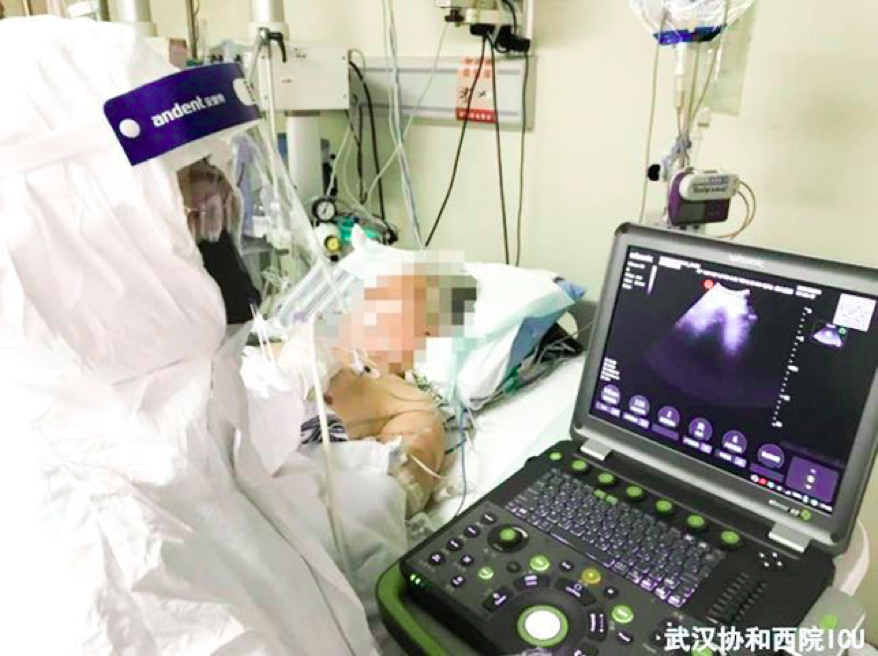
Checking severe patients in the ICU at Wuhan Union Hospital West Campus on February 8
7. Killing harmful viruses with strong electric fields
Associate Prof. Zhang Ruobing’s team at the Tsinghua SIGS Institute of Energy and Electrical New Technology has been researching technologies that kill pathogens using strong electric fields. The team initially developed a portable plasma surface disinfection device as well as a device for inactivating liquid medical waste.
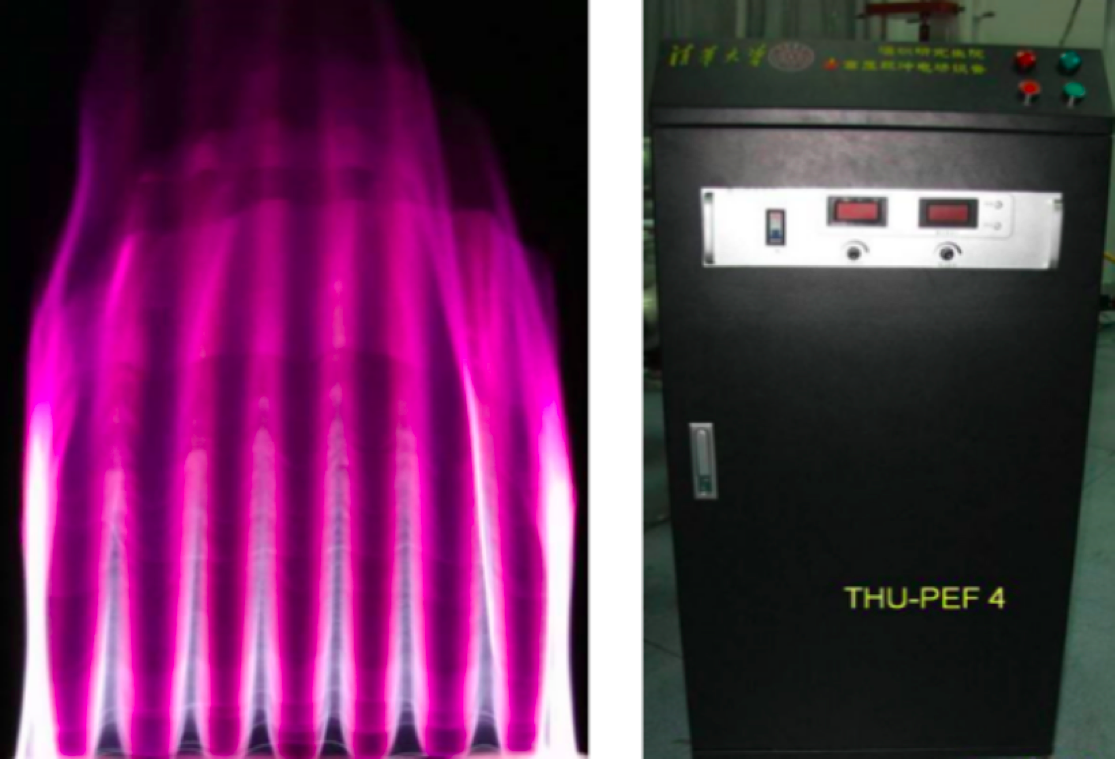
Plasma jet arrays (left) and pulsed electric field power source (right)
Powered by strong-pulsed electric fields, the portable plasma disinfection device can be used on surfaces that are sensitive to high heat and pressure. The liquid medical waste inactivation device is controlled by intense pulsed electric fields and can kill viruses in microsecond timescales.
Currently, the team is optimizing the system and actively working with the Shenzhen University General Hospital and others to conduct follow-up evaluation, in hopes that it can be applied as soon as possible to aid in the fight against COVID-19.
8.?New rapid testing system speeds COVID-19 diagnosis
SIGS Associate Prof. Mi Shengli’s research team and Shenzhen Huamai Biological Medical Technology Co. Ltd. are working on solutions that achieve quick and accurate pathogen detection. The team developed a high-throughput automated microfluidic chip system that improves detection speed of suspected cases.
The microfluidic chip-based portable nucleic acid rapid test system can significantly shorten confirmation time of suspected cases, reduce workload and improve prevention and control efficiency of the epidemic. The technology is also applicable in the detection and prevention of other diseases in the future.

Schematic diagram of microfluidic chip developed by the team?
9. Smart nucleic acid detection device for community screening
Building upon previous work in special image sensing components in nucleic acid sequencing, Associate Prof. Zhang Sheng’s team at Tsinghua SIGS is developing an intelligent nucleic acid detection device based on single molecule fluorescence image sequencing.
The device will help medical workers quickly screen suspected patients in families or communities, reducing the accumulation and cross-infection of potential infected cases. Currently, the prototype structure design of the intelligent detection device and preparations for early research has been completed.
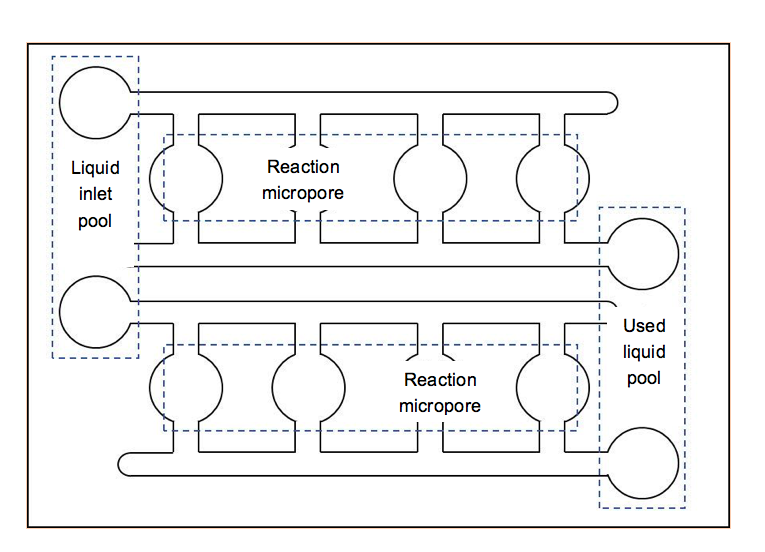
Partially enlarged schematic diagram of microfluidic structure
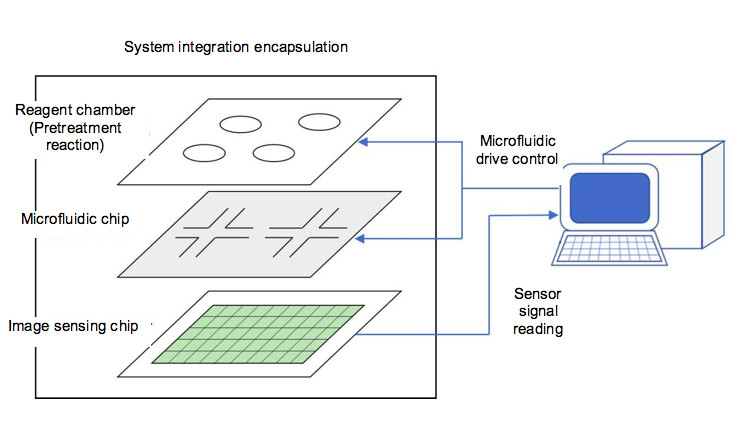
Schematic diagram of system integration
10.?Intelligent Monitoring System and High-throughput Screening Technology help COVID-19 prevention and control
Prof. Wang Xingjun’s team from Tsinghua SIGS has developed an intelligent monitoring system with a wearable device for monitoring in quarantine facilities, and a high-throughput screening system to identify virus carriers in high flow density public places.
The Intelligent Monitoring System uses a body temperature sensor that can be worn on the forehead or underarm area to collect data, in which data is then transmitted to a cloud platform. Those with normal physiological data do not need to be repeatedly measured for a certain period of time.
The high-throughput screening system can be used in high flow density sites, such as schools, train stations and customs. The system can collect real-time body temperature and blood oxygen data for multiple people with non-contact methods. It can also be directly connected to the health department for follow-up observation, diagnosis and treatment. These two systems can provide full-coverage services for medical isolation observation and for high-throughput screening.
11.? R&D of New COVID-19 Detection Strips and Kit
Tsinghua-Berkeley Shenzhen Institute (TBSI) Assistant Prof. Qin Peiwu and his team has been developing new ways of detecting the COVID-19 virus with CRISPR reaction, custom designed mini-spectrometer, and single molecule imaging. This novel technique addresses limitations of current nucleic acid detection kits, which is time-consuming and incapable of detecting shorter COVID-19 RNA fragments.
The team will also develop detection strips for rapid virus RNA testing. The CRISPR reaction system is dissolved onto the test paper, which can detect RNA fragments derived from COVID-19 patients' throat swab samples. The signal can be visualized by eye or by high-sensitivity spectrometer.
12. AI + empowers Shenzhen Nanshan against virus and in economic recovery
After the outbreak of COVID-19, SIGS research groups led by Prof. Ma Lan and Prof. Ma Zhaoyuan announced an AI-based epidemic model to predict the spread and peak of the outbreak for the country. Predicted results for February 1 to 7 had an average accuracy better than 98%, and predictions of the peak period and inflection point were consistent with Academician Zhong Nanshan’s forecast.
For Shenzhen’s Nanshan District, the team proposed suggestions for the number of people to resume work each day. Based on AI modeling, these references assist the local government in making accurate and scientific decisions, so that local industry can resume normal operations in a safe and systematic way.
Cover design: Wu Bingyu, supervised by Wen Xueyuan
Source: Tsinghua University Wechat
Editor: Lin Yuan, Jeremy Tai


